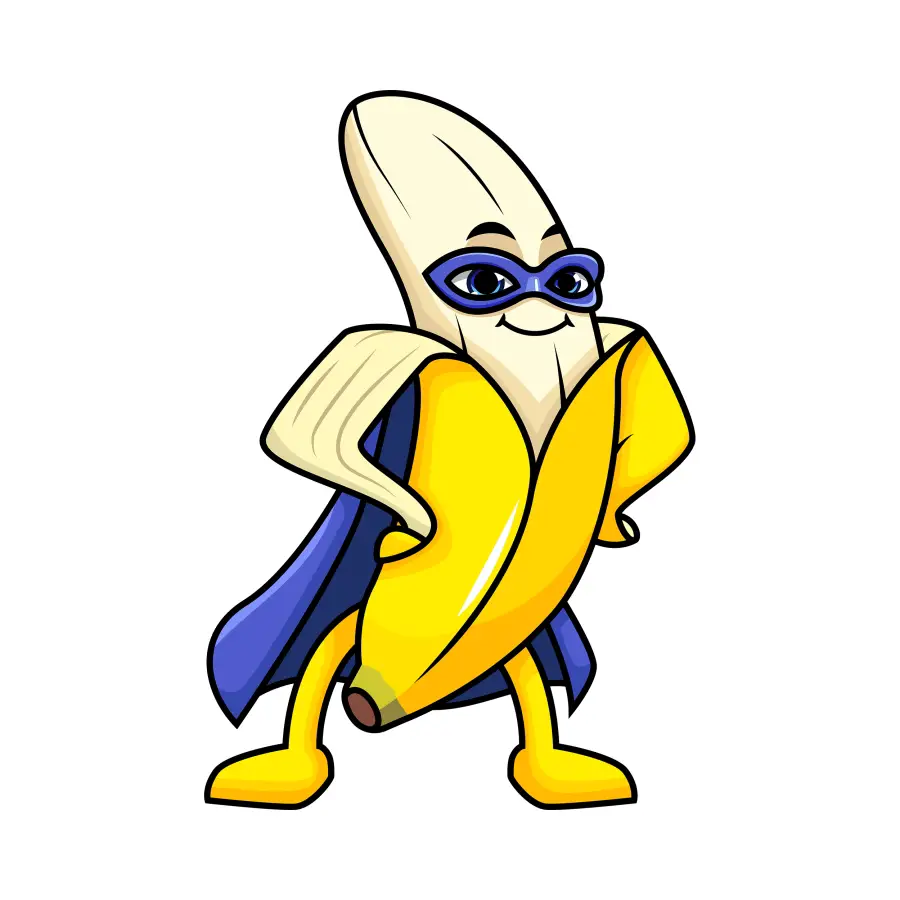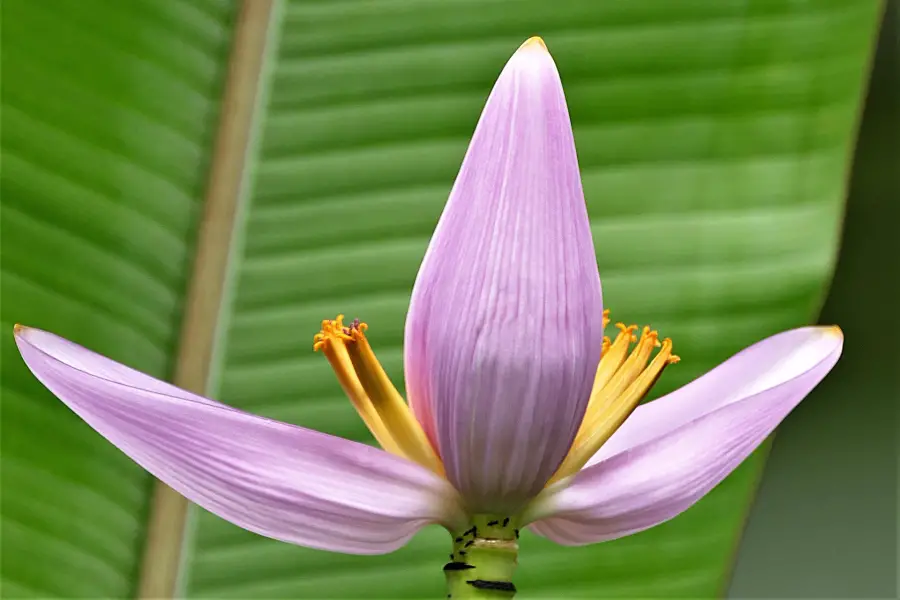Bananas are awesome snacks that pack a mighty nutritional punch. From essential potassium supplementation to blood pressure regulation, there are plenty of reasons to love the famous fruit.
Technically speaking, most edible bananas (the most popular being Cavendish) come from the female flowers of the tree making them essentially female. The Cavendish variation of banana trees don’t actually reproduce themselves, but are propagated with human help.
But just how much do we know about bananas and how they come to be? What is the reproductive process of the banana tree? Do bananas have sexes? Well, let’s find out.

Contents
Are Bananas Female?
Before we answer the above question, we need to dive into some basic banana reproductive science. Though the answer seems simple, it is really only true technically. There is a lot more to it.
As you can probably remember from science class, plants reproduce in two major ways: sexually and asexually.
Sexual Reproduction In Plants?
Sexual reproduction involves the fusion of reproductive cells known as gametes. In plants, the gametes in question are pollen and ovules (also known as “eggs”). In order to reproduce, pollen must be transferred from male sex organs known as stamens to female organs known as pistils. This movement is known as pollination.
The flowers of most plant species have both stamens and pistils, meaning they can self-pollinate to produce seeds with 100% of the original plant’s genetic code. Plants can also receive pollen from other plants of the same species in a process known as cross-pollination.
Pollination is facilitated by agents like the wind, bees, butterflies, birds, etc. The animals, in particular, are attracted to a flower’s nectar, and as they move from plant to plant, they inadvertently pick up sticky pollen and deposit it on the next pistil they interact with, which prompts fertilization and the eventual formation of fruits and seeds.
Asexual Reproduction
Next is asexual reproduction. Like with self-pollination, this process does not require another parent plant. Naturally, this means the fruits of this process will also have 100% of the siring parent’s DNA.
There are two main avenues of asexual reproduction: fragmentation and propagation.
Fragmentation
Fragmentation is when parts like leaves and stems from the parent plant break off and land in soil and take root. Fragmentation is more commonly referred to as “propagation from cuttings”.
Propagation
Real propagation, though, is a little different. While new plants do develop from parts of the original plant, there is no breaking off like with fragmentation. Instead, various plant types that reproduce this way incorporate extension measures to establish new points of growth.
Here are some other articles you will like…
- Pine Tree Roots: How Far They Spread and How To Remove Them
- Walk-Behind Sprayer: What Is A Push Sprayer Used For?
- Which Side Of Your House Gets The Most Sun? (Garden Tips)
Banana Propagation
Real propagation is also how most edible banana species reproduce. In fact, commercially grown bananas (also known as “Cavendish”) cannot reproduce sexually via self or cross-pollination because the way they have been bred has left them seedless. Wild (aka “hairy”) banana plants can reproduce via pollination and propagation.
For a banana tree to propagate itself, it makes use of an extension measure known as a “corm”. Corms are basically underground stems that sprout new banana tree nodes that will emerge aboveground as suckers that will, in turn, grow into new banana plants. Corms also establish the plant’s roots for water and nutrient uptake.
It is important to note that while Cavendish banana plants do self-propagate, it can be a pretty inefficient way of reproduction. The genetic modification done by people has left the plants somewhat dysfunctional in the reproductive sense, so the plants require assistance.
To counter this, growers typically cut off parts of the original plant’s corm and set it up elsewhere so that shoots can emerge faster. This results in even more clone plants.
Since banana trees are herbaceous plants, the shoots are comprised of leaves tightly wound around a pseudostem known as a rhizome. We refer to it as a “pseudostem” because, unlike other trees, banana “tree” stems are not made of wood.
As the rhizome grows taller it will eventually approach maturity and begin flowering at the top aka stem tip. The surrounding leaves will then spread out in classic banana tree fashion.
The period between propagation and reaching full height is known as the vegetative stage. The period after this is known as the reproductive stage. It can take anywhere between a year and 18 months for a banana plant to enter its reproductive stage.
Banana flowers are pre-formed within the pseudo-stem and emerge in clusters that are known as “hands”. As more time passes by, some hands will develop into bananas.
Want an authentic banana tree of your own? I highly recommend this affordable option you can have delivered right to your front door from Amazon: Banana Fruit Tree Live Tropical Plant
But, Are There Male And Female Bananas?

Now, interestingly, both Cavendish and hairy banana plants develop male and female banana flowers.
In the case of hairy banana plants (Musa velutina), the flowers are comprised of four major parts: stamens, ovaries, petals, and sepals.
Male flowers are very similar to female flowers, as both have the aforementioned parts. However, there are some differences that may not be visible until fruiting.
The major difference is that only female flowers produce fruit. The ovaries in female flowers receive pollen from male flowers and grow into what we call “bananas”.
So, in a nutshell, we can say that bananas are technically female.
At the same time, only male flowers produce viable pollen that can fertilize a female ovary. The stamens on female flowers do not produce viable pollen. Male flowers do not produce fruit.
Like with most plants, pollinators will facilitate the pollination process.
Hairy bananas are actually pinkish in color as opposed to the classic yellow. They also contain large dark seeds that make the fruit very difficult to eat. Hairy banana peels are also fairly delicate, which hinders their commercial viability. Peels that are easily damaged are problematic for storage and shelf-life.
With Cavendish banana plants, the flowering dynamic is pretty much the same as with their wild cousins. There are male and female flowers, all with stamens, ovaries, petals, and sepals. However, genetic modification has rendered pollination impossible.
Female flowers emerge first from the stem tip. Unlike in hairy banana plants, female Cavendish flowers do not require pollination at all, and their ovaries immediately start developing into the yellow bananas we all know and love. Male flowers develop slightly later and produce pollen that wouldn’t be viable for pollination anyway.
Typically, Cavendish bananas do not have seeds in them, although some may have tiny black specks that are underdeveloped husks of would-be seeds. Also, this type of banana has a thicker and more resilient peel that makes transportation and storage much easier than it would be with hairy bananas.
The Final Touches On Male And Female Bananas…
So there you have it. If you are looking for the answer to male vs female in the bananas we find in nearly every grocery store, they are female. Though this is just a technicality, in essence it is true.
Hopefully you have learned a bit about these plants that you can actually grow in your own yard, though with a lot of work to keep them alive. In much of the country these will have to be dwarf varieties in pots that can be brought into a green house during cold weather.
So, the next time you or someone around you eats a banana, you can pull out this bit of trivia for a conversation starter.
More great articles from LawncareGrandpa.com…
- Raised Garden Beds Next To House Foundations- Explained
- Japanese Maple Syrup? Is There Syrup From Japanese Maples?
- Can You Grow Plants In Glass? – (Jars, Containers, Bottles)
References
https://homeguides.sfgate.com/banana-trees-selffruitful-61100.html
https://kids.frontiersin.org/articles/10.3389/frym.2018.00060
https://www.youtube.com/watch?v=MkrtmU3Ex60&ab_channel=IVOrganic
